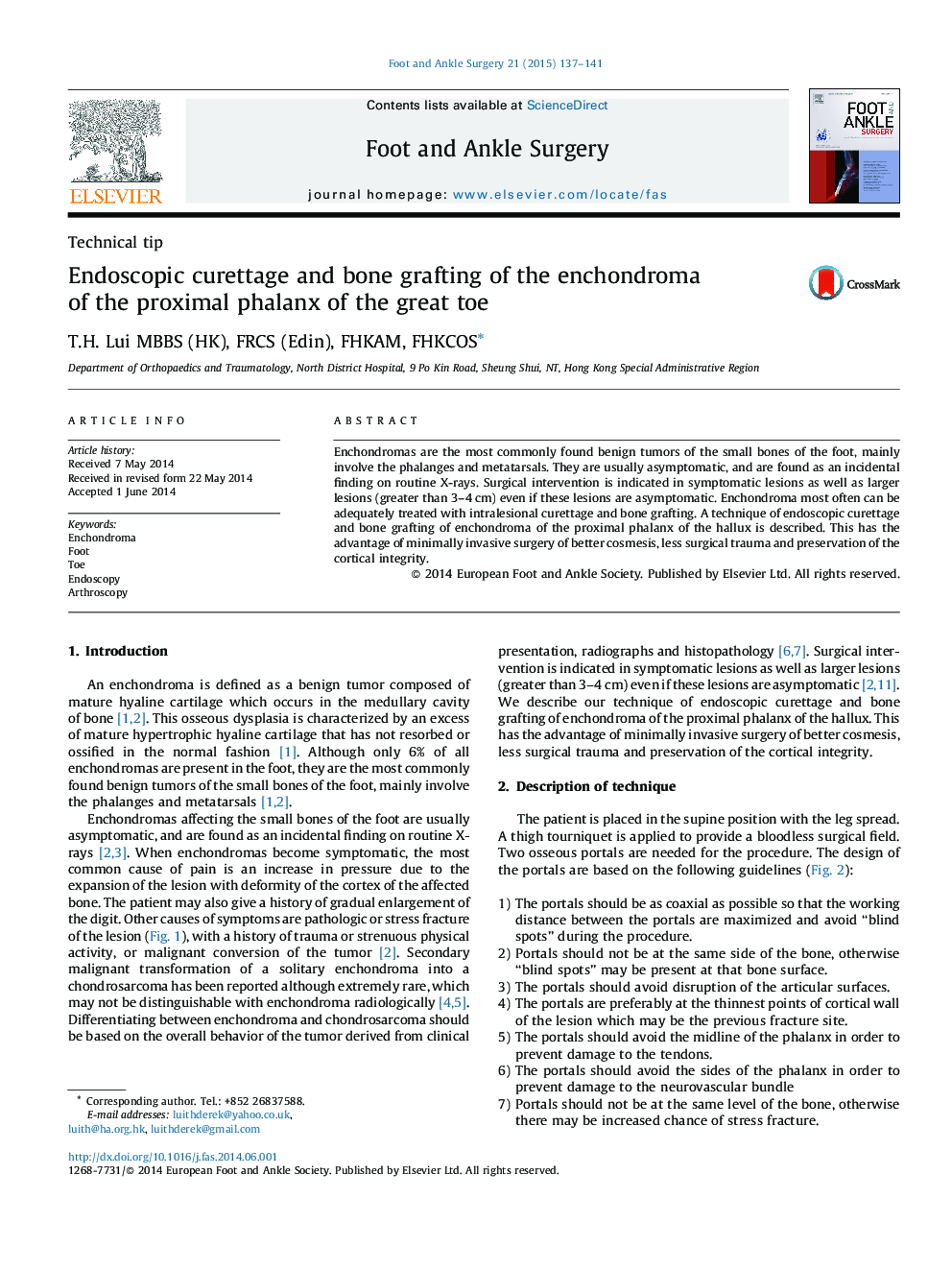| Article ID | Journal | Published Year | Pages | File Type |
|---|---|---|---|---|
| 4054614 | Foot and Ankle Surgery | 2015 | 5 Pages |
•Enchondroma most often can be adequately treated with intralesional curettage and bone grafting.•The portals should be as coaxial as possible during endoscopic curettage and bone grafting of the endochondroma.•Complete curettage is assured during endoscopic procedure.•Preservation of the periosteum during the endoscopic procedure is favorable for the bone regeneration and remodeling.
Enchondromas are the most commonly found benign tumors of the small bones of the foot, mainly involve the phalanges and metatarsals. They are usually asymptomatic, and are found as an incidental finding on routine X-rays. Surgical intervention is indicated in symptomatic lesions as well as larger lesions (greater than 3–4 cm) even if these lesions are asymptomatic. Enchondroma most often can be adequately treated with intralesional curettage and bone grafting. A technique of endoscopic curettage and bone grafting of enchondroma of the proximal phalanx of the hallux is described. This has the advantage of minimally invasive surgery of better cosmesis, less surgical trauma and preservation of the cortical integrity.
